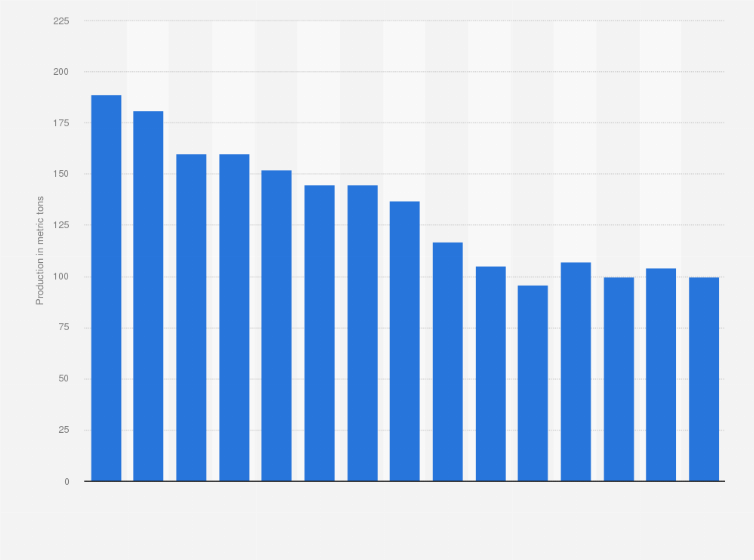South Africa mining gdp
Mining in South Africa: Contribution to GDP and Economic Impact
The mining industry has long been a cornerstone of South Africa’s economy, contributing significantly to Gross Domestic Product (GDP) , employment, and export revenues. As one of the world’s largest producers of gold, platinum group metals (PGMs), diamonds, and coal, South Africa’s mining sector plays a pivotal role in driving economic growth. However, the industry’s contribution to GDP has fluctuated over the years due to challenges such as aging mines, regulatory uncertainty, and global market dynamics. In this blog post, we will explore the mining sector’s impact on South Africa’s GDP, its historical significance, current trends, and future potential.

The Role of Mining in South Africa’s Economy
The mining sector directly contributes approximately 7% to South Africa’s GDP , but its indirect impact is even greater. Through linkages with industries like manufacturing, transportation, and energy, mining supports a much larger share of economic activity. Additionally, mining accounts for a significant portion of the country’s export earnings, particularly from minerals like PGMs, gold, and coal.

Historical Significance of Mining
1. Gold and Diamond Rushes
South Africa’s modern economy was built on the back of its mineral wealth, particularly during the late 19th century gold and diamond rushes. Cities like Johannesburg were founded on mining, and the industry became the backbone of industrialization.
2. Economic Powerhouse
At its peak in the mid-20th century, mining contributed over 20% to GDP and employed hundreds of thousands of workers. The sector also attracted significant foreign investment, establishing South Africa as a global mining leader.
Current Trends in Mining’s Contribution to GDP
1. Declining Share of GDP
While mining remains vital, its share of GDP has declined over the years due to factors such as:
- Aging Mines : Deeper and more costly operations have reduced profitability.
- Commodity Price Volatility : Fluctuations in global prices for gold, PGMs, and coal have impacted revenue.
- Regulatory Uncertainty : Frequent changes in mining laws have deterred investment.
Despite these challenges, mining still contributes billions of rand annually to the economy.
2. Key Minerals Driving GDP Contributions
- Platinum Group Metals (PGMs) : South Africa produces over 70% of the world’s PGMs, which are critical for catalytic converters and green technologies.
- Gold : Although production has declined, gold remains a significant contributor to GDP and exports.
- Coal : Coal mining supports energy production and export revenues, though it faces pressure due to environmental concerns.
- Iron Ore and Manganese : These minerals are essential for steel production and contribute to GDP through exports.
Indirect Economic Impacts
1. Employment
The mining sector directly employs over 450,000 people and supports millions more indirectly through related industries. While job losses have occurred due to automation and mine closures, mining remains a key employer in rural areas.
2. Export Revenues
Minerals account for a significant portion of South Africa’s export earnings. For example:
- PGMs and gold dominate export markets.
- Coal exports provide critical foreign exchange earnings.
3. Infrastructure Development
Mining projects often lead to the construction of roads, railways, and power plants, creating additional jobs and fostering regional development.
Challenges Facing Mining’s Contribution to GDP
1. Aging Infrastructure
Many mines in South Africa are decades old, leading to higher operational costs and reduced productivity. Upgrading infrastructure is essential to maintaining competitiveness.
2. Regulatory Uncertainty
Frequent changes in mining laws and inconsistent enforcement create unpredictability, discouraging long-term investments.
3. Environmental Concerns
Mining activities can cause deforestation, water pollution, and habitat destruction. Stricter environmental regulations may increase costs and reduce profitability.
4. Global Market Dynamics
Fluctuations in commodity prices, driven by global demand and supply chain disruptions, directly impact mining revenues and GDP contributions.
Opportunities for Growth
1. Green Mining Initiatives
Transitioning to sustainable practices, such as using renewable energy and reducing water usage, can lower costs and align with global environmental standards.
2. Exploration of New Minerals
Exploring untapped resources, such as rare earth elements (REEs) and lithium, can open new revenue streams and boost GDP contributions.
3. Technological Advancements
Automation, artificial intelligence (AI), and data analytics can improve efficiency, reduce costs, and enhance safety, ensuring the industry remains competitive globally.
4. Regional Collaboration
Collaboration with neighboring countries through regional initiatives, such as the Southern African Development Community (SADC) , can streamline cross-border mining projects and boost regional GDP.
Frequently Asked Questions (FAQs)
Q1: What percentage of South Africa’s GDP comes from mining?
A1: Mining directly contributes approximately 7% to South Africa’s GDP , with an even larger indirect impact through related industries.
Q2: Which minerals contribute most to South Africa’s GDP?
A2: Platinum group metals (PGMs), gold, coal, iron ore, and manganese are the key contributors.
Q3: Why has mining’s share of GDP declined?
A3: Factors include aging mines, rising costs, regulatory uncertainty, and global market volatility.

